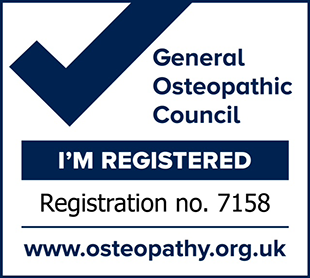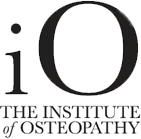Supraspinatus Tendinosis/Tendonitis
The supraspinatus muscle originates from the supraspinous fossa of the scapula and inserts into the greater tuberosity of the humerus. It is the most commonly injured rotator cuff muscle.
Tendinosis refers to internal tendon degeneration. This occurs because of an imbalance between tendon breakdown and tendon repair. Therefore tendinosis can result from an increase in breakdown, (e.g) overuse/injury, or from a decrease in the healing response. Tendonitis refers to tendon inflammation. While this term is commonly used to describe activity related pains in various of the body, recent studies have shown that there is very little inflammation present in the majority of cases of tendon-related pain.
The Sports Injuries Specialist – Registered Osteopath has also found that often bicipital tendinopathy is linked to rotator cuff conditions.
What is the Natural History of Rotator Cuff Tendinosis?
Tendinosis according to the Sports Injuries Specialist – Registered Osteopath, tends to be a self-limited process that resolves with adequate treatment. Tendon healing, however, is a slow process that may take many weeks to a few months to heal. During this time, the patient must avoid exposing the tendon to the same conditions that caused tendonitis in the first place, especially overuse of the arm. In some cases, tendinosis may progress to a rotator cuff tear. Progressive weakening of the tendon fibers and internal tendon damage may result in partial or complete tendon failure. This is unusual before the age of 40 but becomes increasing common with advancing age.
Causes/Risk Factors:
Age: As we age our tendons and ligaments lose strength and their internal capacity for tissue repair and healing decreases. Thus, they are equally more prone to injury and less likely to recover quickly.
Overuse: Repetitive use of the arms, especially at or above shoulder level may cause fatigue and damage to the rotator cuff tendons; (e.g). weight training, tennis, squash, badmington, swimming or baseball. If the rate of tissue breakdown exceeds the rate of tissue healing, tendon degeneration may occur. This may be know as Repetitive Strain Injury (RSI). Giving the damaged tissue sufficient time to heal is essential to recovery. Continued pain during activity is an indicator of internal tissue damage and should not be ignored. Efforts to work through the pain will result in further damage.
Poor Posture: Forward slumping of the shoulders causes the shoulder blade to tilt forward and down. This narrows the space available for the rotator cuff tendons and may cause abrasion of the tendon’s surface. In addition, excess pressure from downward sloping may reduce blood supply, resulting in tissue breakdown.
Weakness: Many people who engage in repetitive motion activities, whether through work, sport or recreation, develop fatigue in the rotator cuff muscles. If the muscles are not allowed sufficient time to rest, recover and remodel, fatigue can lead to internal damage to the muscle and tendon. In addition, fatigue promotes faulty mechanics in the ball and socket mechanism that accelerate this damage.
Stiffness: Injury to the shoulder, whether from a single incident or from repetitive overuse, often causes the capsule surrounding the ball and socket joint to contract and tighten. This is particularly true for the posterior capsule of the shoulder. Posterior capsule tightness causes the ball to slide upwards on the socket during many activities such as reaching and lifting. This abnormal movement of the ball on the socket results in abrasion of the rotator cuff on the acromion bone and coracoacromial ligament which form the roof above the tendons.
Instability: some people are born with particularly elastic connective tissue and may have shoulder joints that are very lax, (increased range of motion). This may predispose some people to develop subtle shoulder instability whereby the ball does not stay properly centered in the shoulder socket during shoulder movement. This condition may be associated with impingement of the rotator cuff on the acromion bone and coracoacromial ligament.
Smoking: As with many other tissues in the body, the connective tissues of the musculoskeletal system are adversely affected by smoking. Specifically, smoking damages the circulation to tendons and bones. This not only places these tissues at risk for injury, but also slows or prevents the healing process during the recovery period.
Symptoms and Signs:
Progressively worsening pain both with use and at night are typical features of rotator cuff tendinosis. Most patients cannot recall a single incident that caused the onset of pain. Pain with reaching and lifting, especially at or above shoulder height are common complaints. Many patients may be unable to sleep on the affected side or may be awoken at night when they roll onto the that side. Most patients are relatively comfortable at rest with the arm at the side. Because the tendon is structurally intact and not torn, strength is generally unaffected but limited by pain.
Some patients have pain that radiates into the neck, back or upper arm due to shoulder fatigue. Some patients report pain when trying to reach for the back pocket. Typically pain with overhead use of the arm or shoulder weakness and/or stiffness is usually reported. The physical exam of rotator cuff tendinosis by the Sports Injuries Specialist – Registered Osteopath, typically reveals pain when the arm is passively elevated in front of the body. Maneuvers which tighten the posterior shoulder capsule also typically worsen pain because they compress the rotator cuff against the acromion bone. Strength testing generally indicates intact rotator cuff function. However, testing of supraspinatus strength may result in increased pain by placing increased stress on the diseased tendon.
How is Rotator Cuff Tendinosis Diagnosed by the Sports Injuries Specialist – Registered Osteopath?
In straight forward cases, the patient’s history and physical exam may be all that is necessary to make a diagnosis of rotator cuff tendinosis. In some patients, extreme pain may make it difficult to adequately assess the degree of tendon disease, raising suspicion of a possible partial or full thickness rotator cuff tear.
Plain X-rays are generally obtained to screen for other possible causes of shoulder pain, including arthritis or calcific tendonitis. These films also show the shape of the acromion bone, presence of abnormal bone spurs and the relationship of the ball to the socket.
If the clinical history and exam are suspicious of a possible rotator cuff tear, an MRI with dye injected into the shoulder joint or ultrasound is the most accurate diagnostic study to assess the integrity of the tendon.
How is Rotator Cuff Tendinosis Treated by the Sports Injuries Specialist – Registered Osteopath?
The first goal is to promote tendon healing by promoting rest and avoidance of aggravating activities. The second goal is to correct any underlying mechanical abnormalities that may have promoted the development of tendinosis. The third goal is to promote tendon strengthening and remodeling once adequate healing has occurred. The fourth goal is to prevent recurrence through a maintenance program of flexibility, strengthening and aerobic conditioning. If a thorough course of non-operative treatment fails to result in resolution of pain and restoration of shoulder function, surgical treatment may be necessary. Generally surgery is not entertained or recommended until 3-6 months of non-operative treatment has been completed.
Shoulder Pain_Supraspinatus Tendonitis/Tendinosis. Treatment At Harrow Osteopaths, Wembley Osteopaths, Chelsea Osteopaths by The Sports Injuries Specialist – Registered Osteopath. Regulated: Harrow Osteopaths, Wembley Osteopaths, Chelsea Osteopaths – The Sports Injuries Specialist – Registered Osteopath. How Shoulder Pain_Supraspinatus Tendonitis/Tendinosis is treated at Harrow Osteopaths, Wembley Osteopaths, Chelsea Osteopaths by The Sports Injuries Specialist – Registered Osteopath. Shoulder conditions and Supraspinatus Tendonitis/Tendinosis are treated with gentle, non-invasive techniques designed to help improve blood circulation and drainage of waste products/accumulated toxins. Most patients may find relief from pain and discomfort through conservative treatments and hot/cold therapy.
If you suspect that you have Supraspinatus Tendonitis or Supraspinatus Tendinosis, it is critical to seek the urgent consultation of the Sports Injuries Specialist – Registered Osteopath.
ZAHIR A CHAUDHARY BA (Hons), BSc (Hons), ND, M Ost.Med
EMAIL: emergencyosteopath@gmail.com
CONTACT: 0792 100 4705
WEB: https://www.sportsinjuriesspecialist.co.uk
HARROW OSTEOPATHIC CLINIC,
9 LITTLETON RD,
HARROW,
MIDDLESEX.
HA1 3SY.
FITNESS FIRST ALPERTON,
197 EALING RD,
THE ATLIP CENTRE,
ALPERTON,
WEMBLEY,
MIDDLESEX.
HA0 4LW.
WEMBLEY OSTEOPATHS,
31 NORVAL RD,
NORTH WEMBLEY,
MIDDLESEX.
HA0 3TD.
CHELSEA OSTEOPATHS,
208 FULHAM RD,
CHELSEA,
LONDON.
SW10 9PJ.
Leave a reply →


